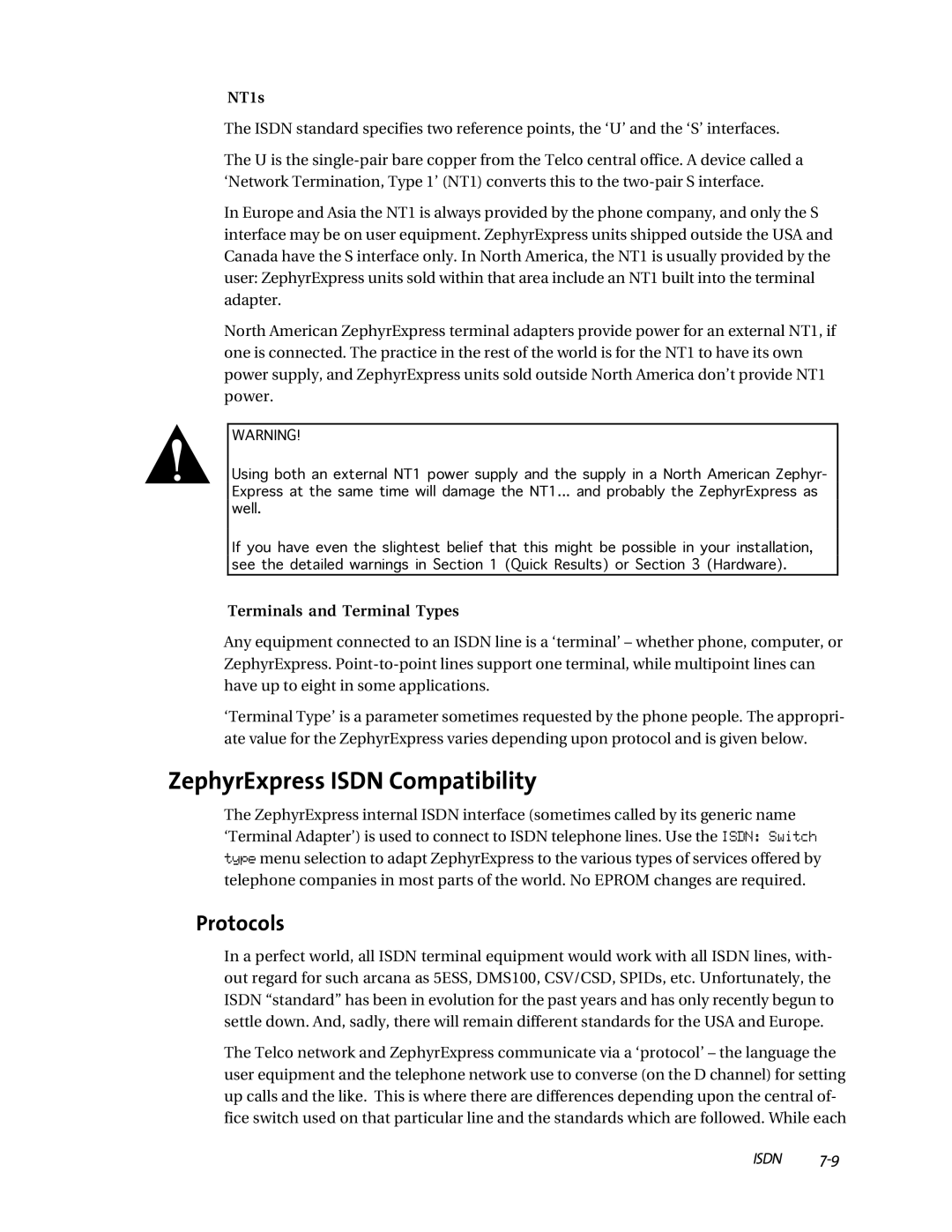
NT1s
The ISDN standard specifies two reference points, the ‘U’ and the ‘S’ interfaces.
The U is the
In Europe and Asia the NT1 is always provided by the phone company, and only the S interface may be on user equipment. ZephyrExpress units shipped outside the USA and Canada have the S interface only. In North America, the NT1 is usually provided by the user: ZephyrExpress units sold within that area include an NT1 built into the terminal adapter.
North American ZephyrExpress terminal adapters provide power for an external NT1, if
wone is connected. The practice in the rest of the world is for the NT1 to have its own power supply, and ZephyrExpress units sold outside North America don’t provide NT1 power.WARNING!Using both an external NT1 power supply and the supply in a North American Zephyr-
Express at the same time will damage the NT1... and probably the ZephyrExpress as well.
If you have even the slightest belief that this might be possible in your installation, see the detailed warnings in Section 1 (Quick Results) or Section 3 (Hardware).
Terminals and Terminal Types
Any equipment connected to an ISDN line is a ‘terminal’ – whether phone, computer, or ZephyrExpress.
‘Terminal Type’ is a parameter sometimes requested by the phone people. The appropri- ate value for the ZephyrExpress varies depending upon protocol and is given below.
ZephyrExpress ISDN Compatibility
The ZephyrExpress internal ISDN interface (sometimes called by its generic name ‘Terminal Adapter’) is used to connect to ISDN telephone lines. Use the ISDN: Switch type menu selection to adapt ZephyrExpress to the various types of services offered by telephone companies in most parts of the world. No EPROM changes are required.
Protocols
In a perfect world, all ISDN terminal equipment would work with all ISDN lines, with- out regard for such arcana as 5ESS, DMS100, CSV/CSD, SPIDs, etc. Unfortunately, the ISDN “standard” has been in evolution for the past years and has only recently begun to settle down. And, sadly, there will remain different standards for the USA and Europe.
The Telco network and ZephyrExpress communicate via a ‘protocol’ – the language the user equipment and the telephone network use to converse (on the D channel) for setting up calls and the like. This is where there are differences depending upon the central of- fice switch used on that particular line and the standards which are followed. While each
ISDN
